Differential regional expression patterns of α-synuclein, TNF-α, and IL-1β; and variable status of dopaminergic neurotoxicity in mouse brain after Paraquat treatment
- PMID: 22112368
- PMCID: PMC3247140
- DOI: 10.1186/1742-2094-8-163
Differential regional expression patterns of α-synuclein, TNF-α, and IL-1β; and variable status of dopaminergic neurotoxicity in mouse brain after Paraquat treatment
Abstract
Background: Paraquat (1, 1-dimethyl-4, 4-bipyridium dichloride; PQ) causes neurotoxicity, especially dopaminergic neurotoxicity, and is a supposed risk factor for Parkinson's disease (PD). However, the cellular and molecular mechanisms of PQ-induced neurodegeneration are far from clear. Previous studies have shown that PQ induces neuroinflammation and dopaminergic cell loss, but the prime cause of those events is still in debate.
Methods: We examined the neuropathological effects of PQ not only in substantia nigra (SN) but also in frontal cortex (FC) and hippocampus of the progressive mouse (adult Swiss albino) model of PD-like neurodegeneration, using immunohistochemistry, western blots, and histological and biochemical analyses.
Results: PQ caused differential patterns of changes in cellular morphology and expression of proteins related to PD and neuroinflammation in the three regions examined (SN, FC and hippocampus). Coincident with behavioral impairment and brain-specific ROS generation, there was differential immunolocalization and decreased expression levels of tyrosine hydroxylase (TH) in the three regions, whereas α-synuclein immunopositivity increased in hippocampus, increased in FC and decreased in SN. PQ-induced neuroinflammation was characterized by area-specific changes in localization and appearances of microglial cells with or without activation and increment in expression patterns of tumor necrosis factor-α in the three regions of mouse brain. Expression of interleukin-1β was increased in FC and hippocampus but not significantly changed in SN.
Conclusion: The present study demonstrates that PQ induces ROS production and differential α-synuclein expression that promotes neuroinflammation in microglia-dependent or -independent manners, and produces different patterns of dopaminergic neurotoxicity in three different regions of mouse brain.
Figures


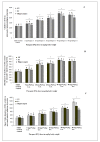
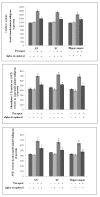
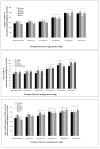


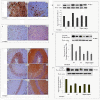




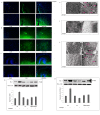
Similar articles
-
The influence of preconditioning with low dose of LPS on paraquat-induced neurotoxicity, microglia activation and expression of α-synuclein and synphilin-1 in the dopaminergic system.Pharmacol Rep. 2022 Feb;74(1):67-83. doi: 10.1007/s43440-021-00340-1. Epub 2021 Nov 11. Pharmacol Rep. 2022. PMID: 34762280 Free PMC article.
-
Pharmacokinetic, neurochemical, stereological and neuropathological studies on the potential effects of paraquat in the substantia nigra pars compacta and striatum of male C57BL/6J mice.Neurotoxicology. 2013 Jul;37:1-14. doi: 10.1016/j.neuro.2013.03.005. Epub 2013 Mar 21. Neurotoxicology. 2013. PMID: 23523781
-
PACAP deficiency sensitizes nigrostriatal dopaminergic neurons to paraquat-induced damage and modulates central and peripheral inflammatory activation in mice.Neuroscience. 2013 Jun 14;240:277-86. doi: 10.1016/j.neuroscience.2013.03.002. Epub 2013 Mar 14. Neuroscience. 2013. PMID: 23500093 Free PMC article.
-
Multifactorial theory applied to the neurotoxicity of paraquat and paraquat-induced mechanisms of developing Parkinson's disease.Lab Invest. 2016 May;96(5):496-507. doi: 10.1038/labinvest.2015.161. Epub 2016 Feb 1. Lab Invest. 2016. PMID: 26829122 Review.
-
Cellular and Molecular Events Leading to Paraquat-Induced Apoptosis: Mechanistic Insights into Parkinson's Disease Pathophysiology.Mol Neurobiol. 2022 Jun;59(6):3353-3369. doi: 10.1007/s12035-022-02799-2. Epub 2022 Mar 19. Mol Neurobiol. 2022. PMID: 35306641 Free PMC article. Review.
Cited by
-
From imbalance to impairment: the central role of reactive oxygen species in oxidative stress-induced disorders and therapeutic exploration.Front Pharmacol. 2023 Oct 18;14:1269581. doi: 10.3389/fphar.2023.1269581. eCollection 2023. Front Pharmacol. 2023. PMID: 37927596 Free PMC article. Review.
-
Advances in non-dopaminergic treatments for Parkinson's disease.Front Neurosci. 2014 May 22;8:113. doi: 10.3389/fnins.2014.00113. eCollection 2014. Front Neurosci. 2014. PMID: 24904259 Free PMC article. Review.
-
Anacardium microcarpum extract and fractions protect against paraquat-induced toxicity in Drosophila melanogaster.EXCLI J. 2017 Mar 20;16:302-312. doi: 10.17179/excli2016-684. eCollection 2017. EXCLI J. 2017. PMID: 28507474 Free PMC article.
-
Sleep disturbance induces neuroinflammation and impairment of learning and memory.Neurobiol Dis. 2012 Dec;48(3):348-55. doi: 10.1016/j.nbd.2012.06.022. Epub 2012 Jul 7. Neurobiol Dis. 2012. PMID: 22776332 Free PMC article.
-
Oxidative Stress Triggers Body-Wide Skipping of Multiple Exons of the Spinal Muscular Atrophy Gene.PLoS One. 2016 Apr 25;11(4):e0154390. doi: 10.1371/journal.pone.0154390. eCollection 2016. PLoS One. 2016. PMID: 27111068 Free PMC article.
References
-
- Niso-Santano M, González-Polo RA, Bravo-San Pedro JM, Gómez-Sánchez R, Lastres-Becker I, Ortiz-Ortiz MA, Soler G, Morán JM, Cuadrado A, Fuentes JM. Activation of apoptosis signal-regulating kinase 1 is a key factor in paraquat-induced cell death: Modulation by the Nrf2/Trx axis. Free Rad Biol Med. 2010;48:1370–1381. doi: 10.1016/j.freeradbiomed.2010.02.024. - DOI - PubMed
Publication types
MeSH terms
Substances
LinkOut - more resources
Full Text Sources

